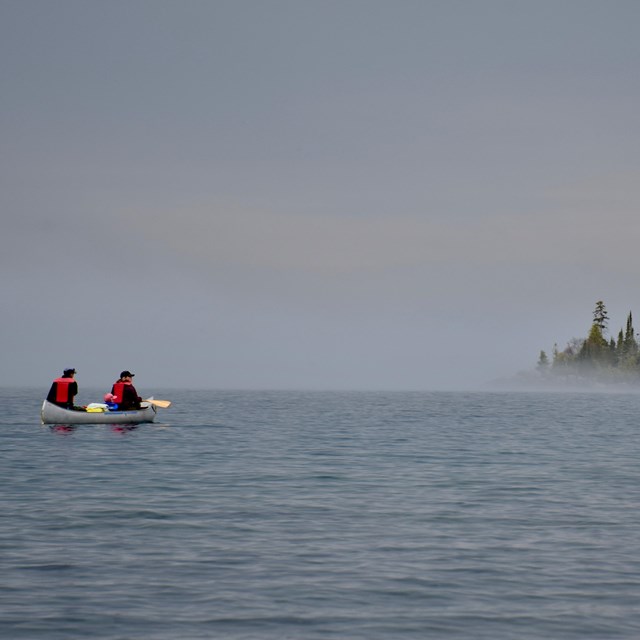
NPS Photo Invasive species are considered to be one of the top threats to the ecological integrity of our national parks. While the Upper Midwest has numerous troublesome invasive species, many of these are not present on Isle Royale. Three quadrillion gallons of cold Lake Superior water create a formidable barrier, making it difficult for new species to reach the archipelago.
But invaders do arrive. They are most often found around developed areas, docks, along trails, and in campgrounds; where exposure from the mainland is high. And though a lone seed or zebra mussel may seem insignificant, if unnoticed, can lead to the establishment of a sizable population. Depending on the species and size of the population, such an event could lead to a decrease in island biodiversity and compromise ecosystem integrity. Please take the time before and during your trip to do your part to repel the invasion.
Visit our keyboard shortcuts docs for details
Lynette Potvin, Ecologist at Isle Royale National Park, and Julie Van Stappen, Chief of Resource Management at Apostle Islands National Lakeshore, describe the threats zebra mussels pose to Lake Superior waters. They also share precautions people can take to help stop the spread of these invasive species during this 60 second video. 
Paul Brown Aquatic InvadersIsle Royale waters, like all Lake Superior waters, face a growing threat from the invasion of non-native species. Once species like zebra mussels, spiny water fleas, and sea lamprey enter an area, they cause large scale changes in the ecosystem. Zebra MusselsIn 2009, zebra mussels were documented for the first time in Isle Royale waters. Their potential to cause catastrophic change cannot be overstated. If zebra mussels were to enter the inland lakes it is estimated that they would cover nearly every habitable surface on an inland lake floor in two to four years. Spiny Water Flea and Sea LampreyTwo invasive species, the sea lamprey and the spiny water flea, have already established a presence in Isle Royale waters. The spiny water flea is presently found only in Lake Superior. The park is concerned it may enter the inland lakes. Once established, its spines harm predator fish and the fleas disrupt the zooplankton population, the basic food source for many fish species. Viral Hemorrhagic SepticemiaThe exotic virus Viral Hemorrhagic Septicemia (VHS) has reached Lake Superior. This disease affects more than 40 species of fish including lake trout and coaster brook trout. The incredible genetic diversity of Isle Royale's lake trout would be at risk if VHS was introduced to Isle Royale waters. 
NPS/Catoctin Mountain Park Spongy MothSpongy moth is one of the most challenging insect pest species in North America. With hundreds of known plant hosts, many of which are completely defoliated during outbreak years, the spongy moth has no shortage of food. The species was first captured on Isle Royale in 2002, and its numbers continue to rise. However, there are no known reproducing populations on the island. Spongy moth larvae travels by wind, but can also be transported on people or gear. 
NPS Photo Stop the Spread
|
Last updated: December 6, 2023



